What on Earth! Magazine, published in partnership with Encyclopaedia Britannica, is the UK’s fastest-growing children’s magazine, helping curious kids fall in love with reading, knowledge and learning. Covering all their favourite topics – from space, animals and the natural world, to history, machines and inventions – each issue is bursting with amazing facts, photos, quizzes, puzzles, jokes and more!
COMPETITION!
FACTopia! • Follow the trail of crazily connected facts all the way from the soldiers disguised as trees… to a mouthful of maggots!
WHAT ON EARTH! • Astonishing photos from around the world
Eureka! • The latest astonishing discoveries, inventions and scientific breakthroughs.
LISTIFIED! • Prepare to be amazed (and amused!) by the unusual facts crammed into these irresistible lists.
THE BRAIN! A USER’S GUIDE • The brain is the most amazing and mysterious organ of the human body. Here - with the help of our expert guide, Dr Brain - you can find out more about your brain and how it works.
ANATOMY OF THE BRAIN!
WHAT ARE THE SENSES?
WHAT ARE EMOTIONS?
Colour it in! • It’s time to get creative with your colouring pens and pencils. Plus, don’t forget to send your finished artwork to editor@whatonearth.co.uk. We’d love to see it!
Ask the experts • Readers ask. Experts answer. Send your questions to: editor@whatonearth.co.uk
WORD UP! • Say hello to all things linguistics and languages!
DOLPHIN • Atlantic bottlenose dolphins are complex communicators. Each dolphin has a unique whistle, which acts as its name. They also use touch and other gestures, such as nods, to interact with one another.
The What on Earth! Quiz • Test your family’s brainpower by playing the What on Earth! Quiz together. Regular readers may have an advantage because some of the facts appeared in previous issues of the magazine. Don’t worry if you don’t know them all, though - the answers are at the end of the quiz!
PICTURE THIS! • Amazing information about our world brought to life by infographics.
The strongest animals on Earth • Which animal is stronger: an elephant or an ant? The elephant can carry the heavier weight, of course. But perhaps a fairer way to decide is to measure how much weight each animal can carry relative to the weight of its own body. Looking at it this way, small but powerful animals, such as ants and beetles, are even stronger - relative to the size of their bodies - than gorillas, bears and elephants!
Jumping champions! • When it comes to jumping, fleas are the champions. Kangaroos can jump 9 metres in a single leap, which is five times their body length. Fleas can jump 50 cm, which might not sound like much, but is actually 200 times their body length!
NOBODY KNOWS! • Using special machines, such as an MRI scanner, neuroscientists can now recognise different patterns of activity inside the brain. But as for how these electrical impulses lead to complex, logical thoughts within a person’s mind…
Puzzles & Games • Stumped? Don’t worry, you can find the answers to all the puzzles on page 47.
Absolutely Everything! • Each month we feature an amazing story from world history taken from the bestselling book by Christopher Lloyd, with illustrations by Andy Forshaw.
SEND IT IN!
HISTORY fact of the month
PUZZLE ANSWERS
Name the artist! • See if you can match these famous works of art to their creators!
Jokes & Riddles • Tickle your ribs and tease your brain with our favourite gags and riddles, hand-picked by our jokes editor May!
What on Earth! Magazine
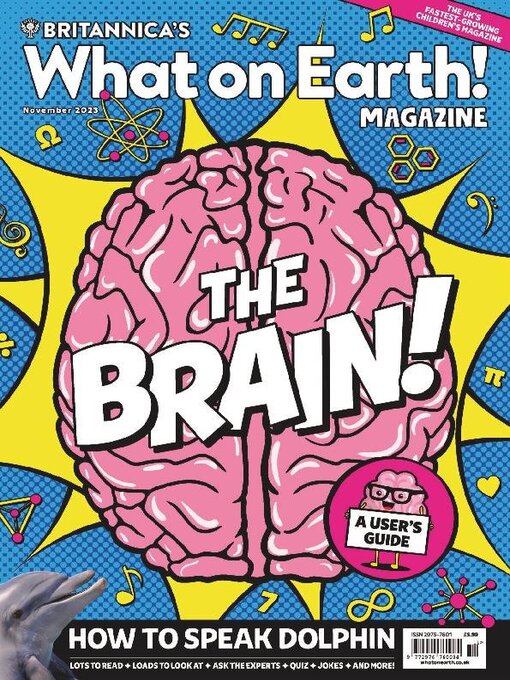
 May 01 2024
May 01 2024
 Apr 01 2024
Apr 01 2024
 Mar 01 2024
Mar 01 2024
 Feb 01 2024
Feb 01 2024
 Dec/Jan 2024
Dec/Jan 2024
 Nov 01 2023
Nov 01 2023
 Oct 01 2023
Oct 01 2023
 Sep 01 2023
Sep 01 2023
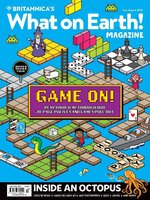 Jul/Aug 2023
Jul/Aug 2023
 Jun 01 2023
Jun 01 2023
 May 01 2023
May 01 2023
 Apr 01 2023
Apr 01 2023
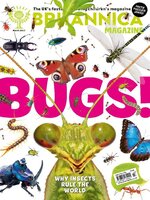 Mar 01 2023
Mar 01 2023
 Feb 01 2023
Feb 01 2023
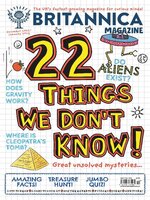 Dec/Jan 2023
Dec/Jan 2023
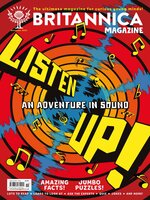 Nov 01 2022
Nov 01 2022
 Oct 01 2022
Oct 01 2022
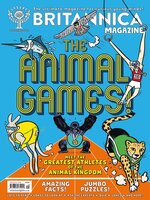 Sep 01 2022
Sep 01 2022
 Jul/Aug 2022
Jul/Aug 2022
